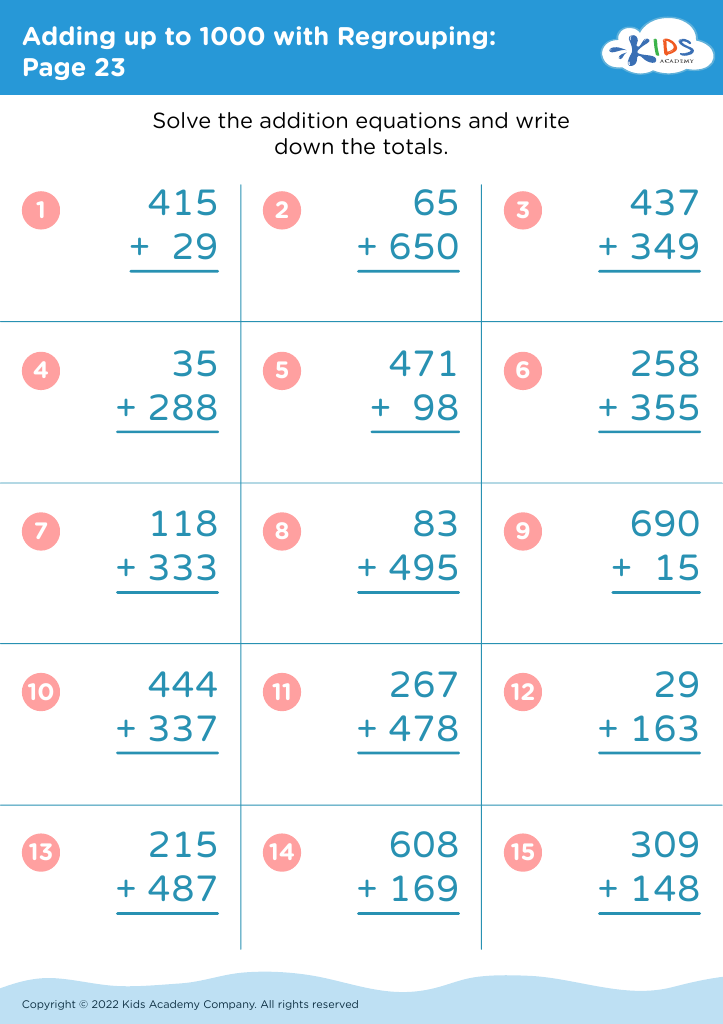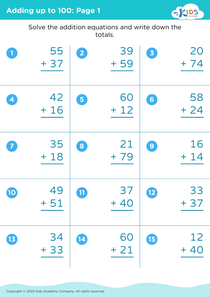Identify shapes Adding up to 1000 Worksheets for Ages 4-8
4 filtered results
-
From - To
Discover our engaging "Identify Shapes Adding Up to 1000 Worksheets" designed for young learners aged 4-8. These fun-filled worksheets combine fundamental shape recognition with essential addition skills, making math both enjoyable and educational. Kids will learn to identify various geometric shapes while adding numbers up to 1000, enhancing their cognitive and analytical abilities. Perfect for classroom activities or at-home practice, these worksheets foster critical thinking and creativity in a playful manner. Help your child build a solid foundation in math and geometry with our interactive resources, ensuring a confident start in their educational journey. Explore and download today!
Understanding shapes and their properties is foundational for children aged 4-8, as it prepares them for more advanced mathematical concepts and critical thinking skills. When parents and teachers focus on identifying shapes, they help children develop spatial awareness, which is crucial for problem-solving in everyday situations. Recognizing and manipulating shapes fosters creativity and contributes to cognitive development, enhancing children's ability to express themselves artistically through drawing and building.
Moreover, introducing numbers while identifying shapes, such as adding up to 1000 through visual means, lays a groundwork for arithmetic skills. As children explore shapes, they simultaneously engage in counting and comparison, helping them understand numerical relationships and quantities. Engaging with concepts of addition in a visual context, like grouping shapes, supports conceptual understanding and makes learning enjoyable.
Moreover, incorporating these lessons into play and hands-on activities helps maintain children's interest and motivation. This thematic approach not only aids retention of mathematical concepts but also emphasizes a holistic educational journey where math is integrated into daily life and play. Ultimately, when parents and teachers emphasize shape identification and related math skills, they play a crucial role in inspiring a lifelong love for learning and developing essential skills that benefit students well beyond the classroom.















